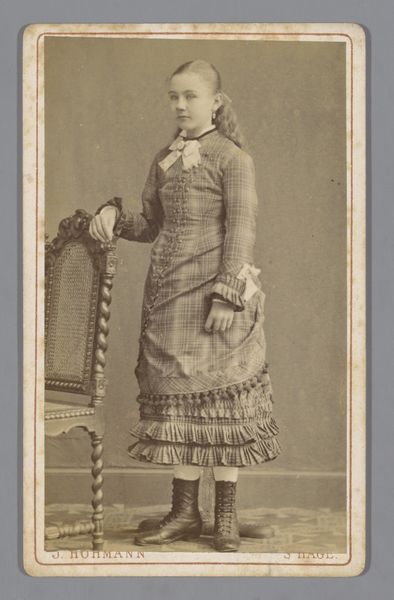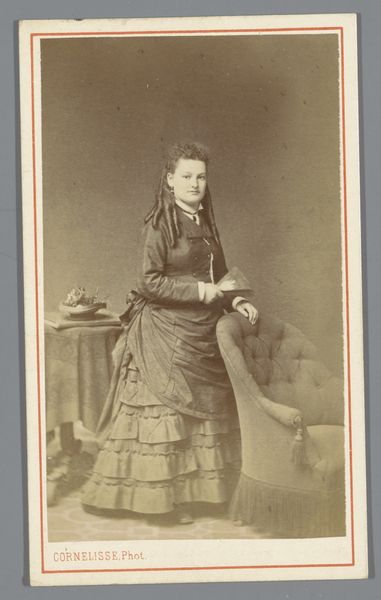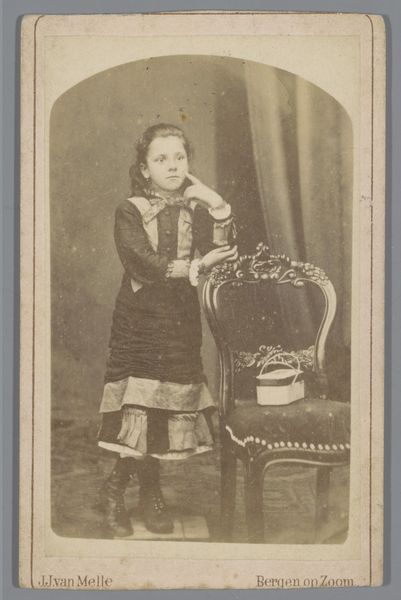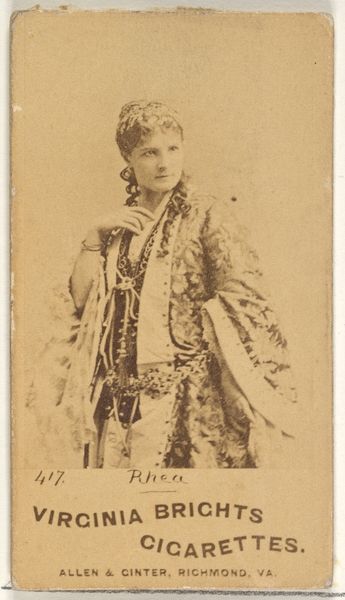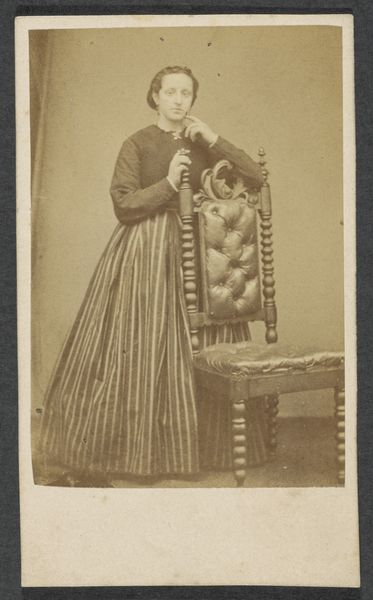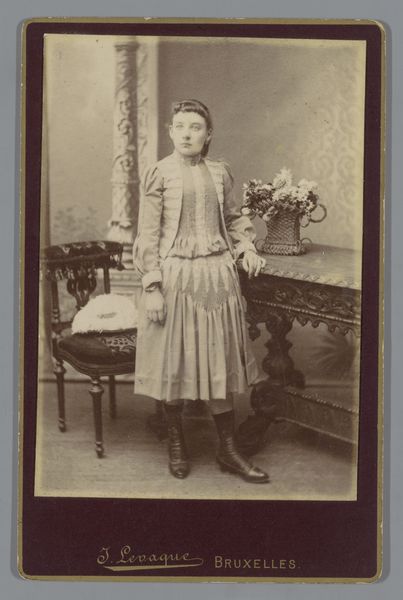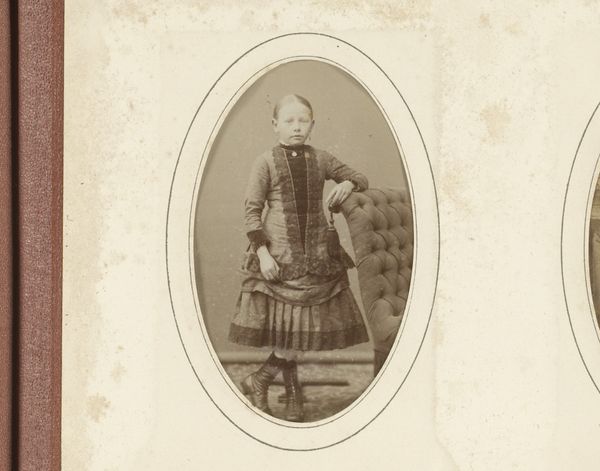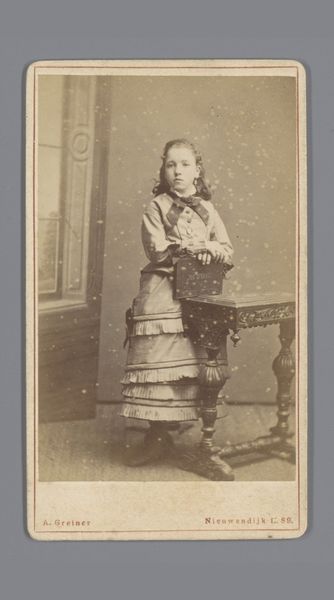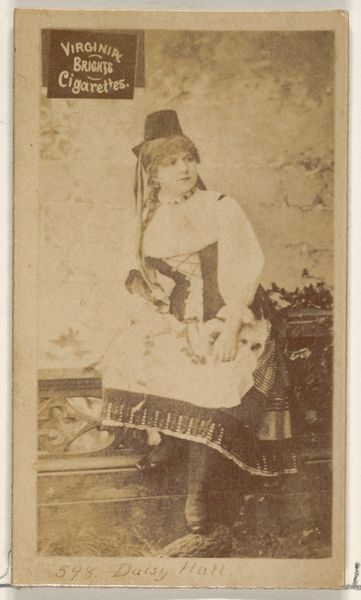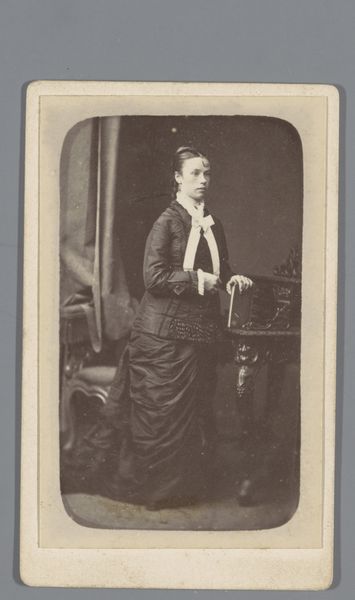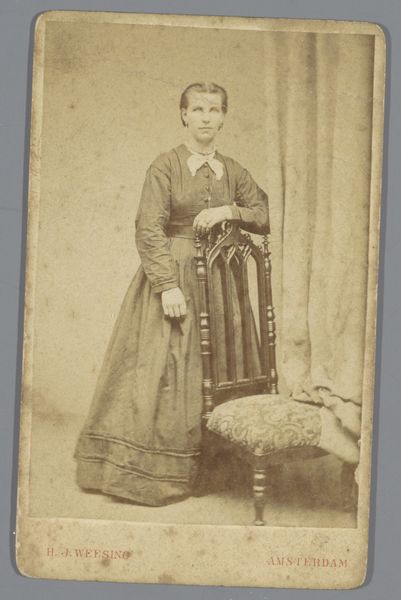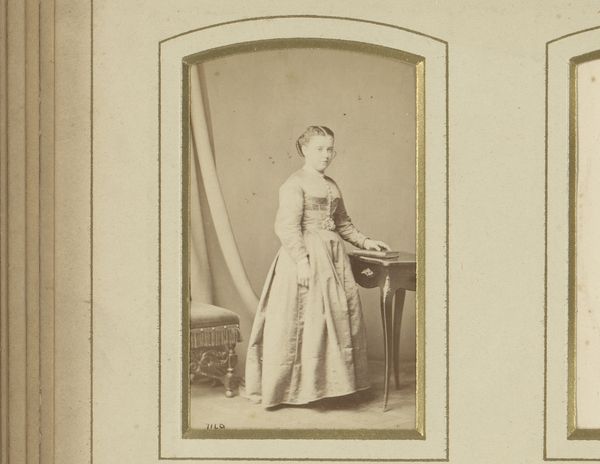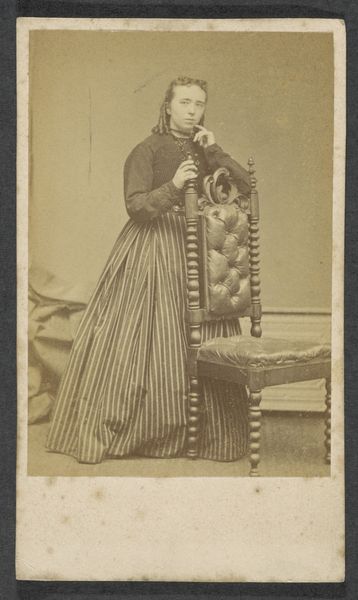
photography
#
portrait
#
photography
#
genre-painting
Dimensions: height 99 mm, width 61 mm
Copyright: Rijks Museum: Open Domain
Curator: Let's discuss this photographic portrait entitled, "Portret van een onbekende vrouw, staande achter een stoel", placing us somewhere between 1863 and 1899. Editor: There’s something so quietly dignified about it. The soft, sepia tones lend a feeling of timelessness, but it's her stillness— the careful composition and balanced light—that captures me. It’s all quite formal, wouldn't you say? Curator: Precisely. Carte de visite photography like this one flourished during that era, democratizing portraiture. Previously the domain of the wealthy, suddenly, the middle class could capture and circulate their images, reinforcing social identity. Notice the prop chair? The vase? Signifiers of aspiration. Editor: The chair, an ornate object, provides such stark contrast to her modest dress. It is an elaborate object amidst subtle detail and tonal variation that offers some dynamic rhythm through dark and light and directs my attention. Curator: Costume is vital. The sober, functional garment and the woman's reserved composure speak to broader social constraints. These portraits operated within established norms to present a constructed identity to the world, where gender and social standing took precedence. Editor: It's a delicate negotiation of contrasts between the rich decorative environment and the more constrained self, right? The subdued emotional landscape of her expression makes it difficult for one to know her inner thoughts, creating a play with surface and interiority. I am left wondering what she made of these rigid societal structures that you are suggesting. Curator: True, yet these commercial studio photos also offered subjects a controlled setting to project themselves. In a sense, there was both an embrace and a subtle performance of identity. The dissemination of these images influenced societal ideas about fashion and conduct and solidified the cultural status quo of the time. Editor: So much can be read through its surface of course but you are correct in asserting how that "surface" contributes to understanding the broader, shaping impact of its moment in culture and photographic portraiture. The controlled setting emphasizes its conscious performance. Curator: Agreed. Photography, initially perceived as purely representational, rapidly evolved to reflect the dynamics of its time. This image embodies both the desire for personal visibility and the adherence to societal expectation. Editor: Indeed. I appreciate how decoding the formal elements gives one a peek into both this person and a particular moment of visual history, a window that offers further thought.
Comments
No comments
Be the first to comment and join the conversation on the ultimate creative platform.
